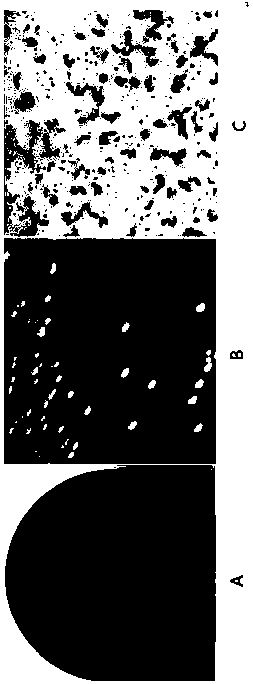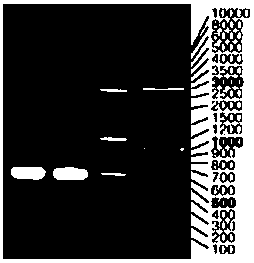Kefir grain ginseng fermentation liquid
A fermented liquid and ginseng technology, applied in the field of fermentation engineering, can solve the problems of bad taste of ginseng, achieve the effect of reducing bad flavor, improving taste, and strong intestinal absorption function
- Summary
- Abstract
- Description
- Claims
- Application Information
AI Technical Summary
Problems solved by technology
Method used
Image
Examples
Embodiment 1
[0020] Example 1 Kefir grain fermented ginseng pulp
[0021] Select intact fresh ginseng without pests and diseases, clean it, steam it for 20 minutes, beat it according to the mass ratio of ginseng to water (g / g) 1:2, 5000rpm / min several times for a total of 3 minutes, and sterilize at 110°C for 20 minutes. The inoculation amount of 5% (w / w) kefir grains was inoculated into ginseng pulp, and cultured at 28°C for 3 days; under the same culture conditions, an equal volume of sterile water was added to serve as a blank control group of unfermented ginseng. Freeze immediately after fermentation, and then dry using vacuum freezer. After drying, the samples are vacuum-packed and stored at -4°C for future use. Combining HPLC and TLC to analyze the conversion of ginsenoside Rg3 in ginseng pulp.
[0022] The analytical conditions of the HPLC method: C18 chromatographic column (4.6 mm×250 mm, 5 μm); column temperature 35°C; injection volume 10 μL; flow rate 1 mL min -1 ; Mobile phase...
Embodiment 2
[0027] Embodiment 2 produces β - Screening of glucosidase strains
[0028] After the kefir grains were fermented with ginseng pulp at 28°C for 48 hours, they were pressed for 10 -3 、10 -4 、10 -5 、10 -6 Four gradient dilutions were taken, and 50 μL of the bacterial solution was evenly spread on the modified aescin medium, and incubated at 25 °C for 48 h. If black hydrolysis spots appeared around the colonies, it was the product. β - Glucosidase strains. After Kefir grain fermented ginseng bacteria liquid was spread on the improved aescin medium and cultured for 36 h, the strain C21 producing black hydrolyzed spots was screened out ( figure 1 A), judging that it is a product β - a glucosidase strain. After the strain was inserted into the solid seed medium, it was observed that the colony was milky white, smooth, opaque, with a smooth surface, and the colony was easy to provoke ( figure 1 B). The results of observing the morphology under a microscope (×100) are as fol...
Embodiment 3
[0030] Example 3 Production β -Molecular identification of strains of glucosidase
[0031] Molecular identification method: sequence analysis of 26S rDNA D1 / D2 region. The DNA extraction of the strains to be tested was performed using the SK8257 kit; the primers used were NL1 (5'-GCATATCAATAAGCGGAGGAAAAG-3') and NL4 (5'-GGTCCGTGTTTCAAGACGG-3'), which were synthesized by Shanghai Sangong Co., Ltd. and sequenced. The DNA sequence information of the strains was compared and analyzed by Blast on NCBI. PCR reaction system (25 μL), including 0.5 μL of genomic DNA (20-50 ng / μL), 10×Buffer (containing Mg 2+) 2.5 μL, dNTP (2.5 mM each) 1 μL, enzyme 0.2 μL, F (10 μM) 0.5 μL, R (10 μM) 0.5 μL, add double distilled water to 25 μL; PCR reaction program is 94 ℃ pre-denaturation 4 min, 94°C for 45 s for 30 cycles; 55°C for 45 s for 30 cycles; 72°C for 1 min for 30 cycles; 72°C for 1 min; 4°C to stop the reaction. The PCR amplification products were detected by 1% agarose gel electrophore...
PUM
 Login to View More
Login to View More Abstract
Description
Claims
Application Information
 Login to View More
Login to View More - R&D
- Intellectual Property
- Life Sciences
- Materials
- Tech Scout
- Unparalleled Data Quality
- Higher Quality Content
- 60% Fewer Hallucinations
Browse by: Latest US Patents, China's latest patents, Technical Efficacy Thesaurus, Application Domain, Technology Topic, Popular Technical Reports.
© 2025 PatSnap. All rights reserved.Legal|Privacy policy|Modern Slavery Act Transparency Statement|Sitemap|About US| Contact US: help@patsnap.com



